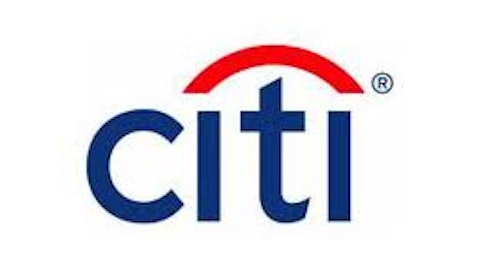While it is tempting to think that Citigroup Inc. (NYSE:C)’s new preferred stock might be an exception, take another look at the chart. The red diamonds show the preferred stocks issued by TBTF banks over the last six months, and yellow diamonds indicate newly issued preferreds from smaller banks. Note how, as we would expect, the gray diamonds (nonbank preferreds) occur randomly on both sides of the best-fit line but that is not the case for those issued by banks.
Almost all new bank-issued preferred stocks are located to the right of the best-fit line, just like C-C, indicating that the market is accepting a much lower reward (i.e., yield) than Moody’s is saying these investors deserve, given the risk.
Today’s preferred stock investors seem to believe that the ratings provided by Moody’s for new bank-issued preferred stocks are now more negative than deserved — a complete reversal of how preferred-stock investors viewed the ratings of such securities just a few years ago.
Who’s right?
The current disparity between how investors and Moody’s assess the risk associated with bank-issued preferred stocks can have several explanations, and an argument can be made supporting both. For example, it could be that Moody’s is simply behind the curve, as many of today’s ratings resulted from a February 2012 global assessment of bank-issued debt (see “Moody’s downgrades firms with global capital markets operations,” published in June 2012).
But perhaps investors are not considering some of the recent regulatory changes that have increased the investment risk of these securities. Both the Wall Street Reform Act (domestically) and the Basel III regulations (internationally) include provisions that disqualify most bank-issued preferred stocks (specifically called trust preferred stocks, or TRUPS) from being counted in “Tier 1 Capital,” a key measure of bank reserves closely watched by regulators.
TRUPS had the “cumulative” dividend provision, meaning that if the bank skipped a dividend payment, it was required to make it up to you downstream. But in an emergency, what good are bank reserves if someone else (e.g., TRUPS shareholders) has a claim to the bank’s cash?
For the last two years, banks have been redeeming their cumulative TRUPS shares and replacing them with new noncumulative traditional preferreds, so today’s bank-issued preferreds represent a higher level of risk to investors than they have in the past.
As the above chart clearly indicates, investors are consistently pricing bank-issued preferreds at a much lower risk level than Moody’s has assigned. Because either could have it right, it is more important now than it has been in several years for those investing in bank-issued preferred stocks to go a step or two beyond agency ratings and seek to understand the risks associated with these securities.
The article Preferred-Stock Investors Now More Risk-Tolerant With Bank Preferreds originally appeared on Fool.com and is written by Doug K. Le Du.
Doug Le Du has no position in any stocks mentioned. The Motley Fool owns shares of Citigroup Inc.
Copyright © 1995 – 2013 The Motley Fool, LLC. All rights reserved. The Motley Fool has a disclosure policy.





